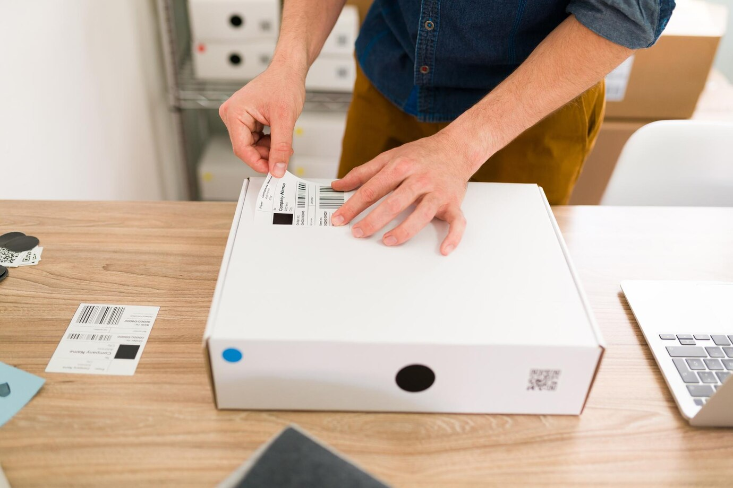Table of Contents
Get Custom eCommerce Fulfillment Service
Book a Meeting
How to Ship a Rug: The Complete Step-by-Step Guide for Safe Delivery
Time: Apr 24,2025 Author: SFC Source: www.sendfromchina.com
Shipping a rug—whether it's a vintage Persian heirloom or a modern synthetic runner—demands more than just rolling it up and sending it off. Given their size, weight, and material sensitivity, rugs require meticulous handling to ensure they arrive at their destination in pristine condition. This comprehensive guide delves into the essentials of rug shipping, from preparation and packaging to cost considerations and choosing the right fulfillment partner.

1. Why Shipping Rugs Safely Matters
Shipping a rug isn't merely about moving an item from point A to point B; it's about preserving its value, integrity, and beauty throughout the journey. Whether you're a homeowner relocating, a retailer fulfilling an order, or an artisan sending a handcrafted piece, understanding the importance of safe rug shipping is paramount.
Preservation of Value
Rugs, especially those that are antique, handmade, tufted, or crafted from natural fibers, often carry significant monetary and sentimental value. Improper handling during shipping can lead to irreversible damage, diminishing their worth and appeal. According to industry insights, a substantial percentage of shipped goods sustain damage due to inadequate packaging and handling. Ensuring meticulous preparation and packaging can significantly reduce risks.
Prevention of Physical Damage
Rugs are susceptible to various forms of damage during transit:
Creasing and Fold Lines: Folding a rug instead of rolling can cause permanent creases, especially in natural fiber rugs.Moisture Exposure: Without proper waterproof packaging, rugs can absorb moisture, leading to mold, mildew, or color bleeding.
Abrasion and Tears: Insufficient padding or protective layers can result in surface abrasions or tears from friction against other items or the packaging itself.
Pest Infestation: Extended shipping durations without protective measures can expose rugs to pests, compromising their integrity.
Maintenance of Aesthetic Appeal
The visual allure of a rug—its patterns, colors, and textures—is a significant aspect of its value. Damage during shipping can fade colors, distort patterns, or flatten textures, detracting from its original charm. Proper packaging ensures that the rug retains its aesthetic appeal upon arrival.
Cost Implications
Damage incurred during shipping can lead to costly repairs or even total loss, necessitating replacements. For businesses, this not only affects the bottom line but can also impact customer satisfaction and brand reputation. Investing in appropriate shipping practices is a proactive measure to avoid such unforeseen expenses.
Professionalism and Trust
For businesses, especially those in e-commerce, the condition in which a product arrives speaks volumes about the company's professionalism. Ensuring that rugs are shipped safely builds trust with customers, encouraging repeat business and positive reviews.
2. Types of Rugs That Can Be Shipped
Virtually all rug types can be shipped, but each requires specific considerations:
Handmade Rugs: Delicate and often valuable, these require extra padding and careful handling.Machine-Made Rugs: Generally more durable but still benefit from proper packaging to prevent damage.
Natural Fiber Rugs: Materials like jute or sisal are prone to moisture damage and should be protected accordingly.
Synthetic Rugs: While more resistant to wear, synthetic rugs, sucha as nylon rugs can still suffer from creasing if not rolled properly.
3. Steps to Ship a Rug

Shipping a rug, whether it's a cherished heirloom or a commercial product, requires meticulous preparation to prevent damage during transit. Below is a comprehensive step-by-step guide to help you navigate the process effectively.
Step 1: Thoroughly Clean the Rug
Before packaging, it's essential to clean your rug to remove dirt, dust, and allergens that could cause damage or odors during shipping.
Vacuum Both Sides: Use a vacuum cleaner to remove surface dirt from both the front and back of the rug. For delicate rugs, use a vacuum without a beater bar to prevent fiber damage.Spot Clean Stains: Address any stains using appropriate cleaning solutions based on the rug's material. For instance, use mild detergent and cold water for wool rugs, and consult professional cleaners for silk rugs.
Ensure Complete Drying: After cleaning, allow the rug to dry completely to prevent mold and mildew growth during transit.
Step 2: Inspect for Damage
Examine the rug for any existing damage, such as frayed edges or loose threads. Documenting the rug's condition with photographs can be helpful for insurance purposes and provides a reference in case of disputes.
Step 3: Roll the Rug Properly
Proper rolling minimizes creases and protects the rug's structure.
Determine Pile Direction: Roll the rug in the direction of the pile to maintain its integrity.For Larger Rugs: If the rug is particularly large, fold it along the width before rolling to create a more manageable package.
Avoid Tight Rolling: Roll the rug snugly but not too tightly, as excessive pressure can damage the fibers.
Step 4: Secure the Rolled Rug
To maintain the rug's rolled form during shipping:
Use Soft Ties: Secure the rug with soft materials like cotton straps or fabric ties to prevent indentations. Avoid using materials that could damage the rug's surface.Tie at Multiple Points: For longer rugs, tie at several intervals along the roll to ensure stability.
Step 5: Wrap the Rug for Protection
Protective wrapping shields the rug from moisture, dirt, and physical damage.
Initial Layer: Wrap the rug in a breathable material like kraft paper or cotton cloth. This layer protects against moisture and pests without trapping humidity.Outer Layer: Cover the initial wrap with a durable plastic layer, such as polyethylene sheeting, to guard against water and dirt. Ensure the plastic is not airtight to prevent condensation buildup.
Seal the Ends: Secure the ends of the wrapping with packing tape, ensuring the rug is fully enclosed.
Step 6: Choose Appropriate Packaging

Box or Crate: Larger rugs may require a reinforced box or wooden crate. Ensure there's sufficient cushioning around the rug to absorb shocks.
Avoid Oversized Packaging: Excess space can lead to movement and potential damage. Use padding materials like bubble wrap or foam to fill any gaps.
Step 7: Label and Prepare for Shipping
Proper labeling and documentation facilitate smooth delivery.
Clear Labeling: Affix a shipping label with the recipient's address, your return address, and any handling instructions.Include Documentation: For valuable rugs, include an inventory list and photographs inside the package for reference.
Insurance: Consider purchasing shipping insurance to protect against loss or damage.
Step 8: Select a Reliable Shipping Carrier
Choosing the right carrier is crucial for timely and safe delivery.
Compare Options: Evaluate carriers based on cost, delivery times, and handling capabilities.Specialized Services: For high-value or antique rugs, consider carriers that offer white-glove services or specialize in fragile items.
Track the Shipment: Opt for services that provide tracking to monitor the rug's progress.
By following these detailed steps, you can ensure that your rug is well-protected and arrives at its destination in excellent condition. Proper preparation minimizes risks and provides peace of mind throughout the shipping process.
4. Cost of Shipping a Rug

Shipping costs vary based on factors like size, weight, distance, and carrier. Here's a general breakdown:
Factors Influencing Shipping Costs
Several key factors determine the cost of shipping a rug:
Size and Weight: Larger and heavier rugs typically incur higher shipping fees. For instance, a standard 8′ x 10′ area rug weighing 35 lbs may cost at least $100 to ship within the continental U.S.Distance and Destination: Shipping costs vary based on the distance between the origin and destination. Local shipping (under 150 miles) may cost between $50–$75 for a medium-sized rug, while national shipping can range from $100–$200.
Shipping Method: The choice between standard, expedited, or next-day delivery affects the cost. Standard shipping (5–7 business days) is the most cost-effective, while next-day air can exceed $360.
Packaging and Handling: Proper packaging materials and special handling requirements can add to the overall shipping cost.
Insurance and Additional Services: Opting for shipping insurance or services like white-glove delivery will increase the total expense.
Estimated Shipping Costs by Rug Size
Here's a general breakdown of shipping costs based on rug size:
Small Rugs (e.g., 2′ x 6′): $18.99–$69.97Medium Rugs (e.g., 4′ x 6′): $30.84–$101.32
Large Rugs (e.g., 6′ x 9′): $77.96–$283.65
Extra-Large Rugs (e.g., 8′ x 10′): $100–$300 for standard shipping; $500+ for white-glove service
Carrier-Specific Rates
Shipping rates can vary among carriers:
UPS Ground: Approximately $101.54 for a 30-pound rug shipped from New York to Los Angeles.FedEx Ground: Approximately $100.10 for the same shipment.
USPS Retail Ground: Approximately $90.25 for the same shipment.
For international shipments, costs can exceed $500 due to customs duties and taxes.
Tips to Reduce Shipping Costs
Use Ground Shipping: Opt for standard ground services over expedited options to save money.Compare Carriers: Rates vary among USPS, FedEx, and UPS; comparing them can lead to savings.
Consider Freight Services: For oversized rugs, freight shipping may be more economical.
Utilize Flat-Rate Boxes: For smaller rugs, flat-rate options can offer savings.
Ship During Off-Peak Times: Avoid shipping during holidays when rates may be higher.
5. What Is the Cheapest Way to Ship a Rug?

Opt for Ground Shipping Services
For domestic shipments, ground services like USPS Retail Ground, UPS Ground, and FedEx Ground typically offer the most economical rates. For instance, shipping a 30-pound rug from New York to Los Angeles via USPS Retail Ground can cost approximately $90.25, while UPS Ground may charge around $101.54.
Utilize Shipping Platforms for Discounts
Platforms such as SFC and ParcelPath provide access to discounted rates by aggregating shipping volumes. For example, SFC offers USPS Parcel Select shipping for a 30-pound rug at approximately $87.68, which is lower than standard retail rates.
Consider Freight Services for Large Rugs
If you're shipping oversized rugs, freight services like TSI's White Glove Consolidated shipping can be cost-effective. These services specialize in handling bulky items and may offer better rates for large shipments.
Compare Multiple Carrier Quotes
Using platforms like SFC allows you to compare quotes from various carriers, ensuring you find the most affordable option for your specific shipment. The approach can lead to savings of up to 80% on shipping costs.
Package Efficiently to Reduce Dimensional Weight
Shipping costs are influenced by both weight and package dimensions. By rolling your rug tightly and using appropriately sized packaging, you can minimize dimensional weight charges. Ensure there's only 3-4 inches of extra space in the box to accommodate cushioning materials without incurring additional fees.
Ship During Off-Peak Times
Shipping during off-peak periods, such as mid-week or outside of holiday seasons, can result in lower rates and faster delivery times.
Leverage Insurance Wisely
While adding insurance increases upfront costs, it can save money in the long run by protecting against potential losses or damages, especially for valuable rugs. Evaluate the value of your rug to determine if insurance is a cost-effective addition.
6. Ship Rugs Safely with SendFromChina Fulfillment

Shipping a rug requires meticulous packaging, a reliable carrier, and strategic cost management to prevent damage and avoid unexpected fees. Whether you're shipping domestically or internationally, partnering with a logistics provider experienced in handling bulky, high-value items can simplify the process.
SendFromChina (SFC) specializes in managing delicate, oversized shipments with precision and care. From expert packing to dependable delivery, SFC enables individuals and businesses to ship rugs confidently.
If you're seeking a stress-free rug shipping solution, contact SFC to learn how we can protect your rugs during transit and streamline your shipping process.
7. Conclusion
Shipping a rug requires attention to detail, from proper cleaning and packaging to selecting the right shipping method. By following these steps and considering services like SendFromChina Fulfillment, you can ensure your rug arrives safely and cost-effectively.
8. FAQs
Q1: Can I fold a rug for shipping?
A: Yes, especially for larger rugs. Fold along the width before rolling to make the package more compact.
Q2: Should I insure my rug during shipping?
A: Yes, insurance protects against potential loss or damage during transit.
Q3: How do I prevent my rug from getting damaged during shipping?
A: Properly clean, roll, and wrap the rug using protective materials. Secure it tightly to prevent movement.
Q4: What is dimensional weight, and why does it matter?
A: Dimensional weight considers package size in shipping costs. Larger packages may incur higher fees even if they’re lightweight.
Q5: Is international shipping significantly more expensive?
A: Yes, international shipping can be costlier due to distance and customs. Services like SendFromChina can help manage these costs effectively.
 Post Views:3453
Post Views:3453
Copyright statement: The copyright of this article belongs to the original author. Please indicate the source for reprinting.
Previous Post
What Is Supply Chain Forecasting? Types, Methods & Key Features Explained
Next Post
TAGS
Hot Research
Get Custom eCommerce Fulfillment Service
Book a Meeting
Get a Custom China Fulfillment Solution with FREE Storage for 30 Days
 Want to know about our services, fees or receive a custom quote?
Want to know about our services, fees or receive a custom quote?
 Please fill out the form on the right and we will get back to you within a business day.
Please fill out the form on the right and we will get back to you within a business day.
 The more information you provide, the better our initial response
will be.
The more information you provide, the better our initial response
will be.





 TAGS:
TAGS: